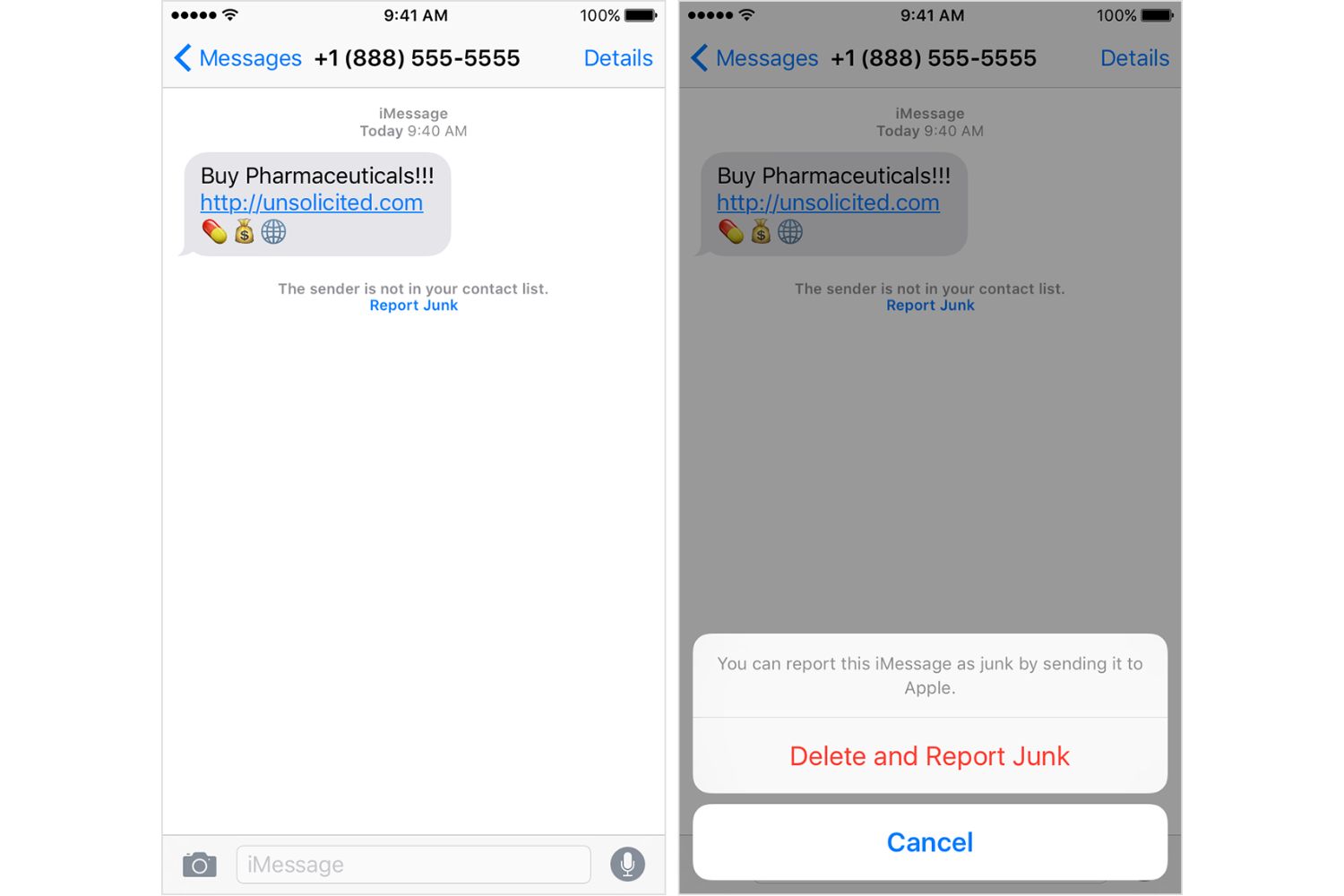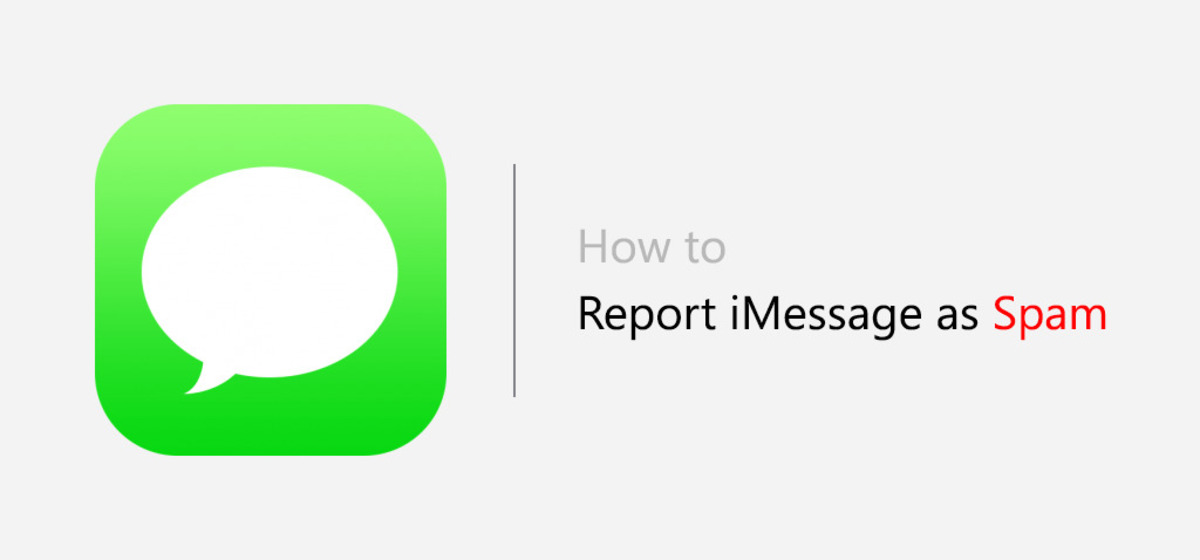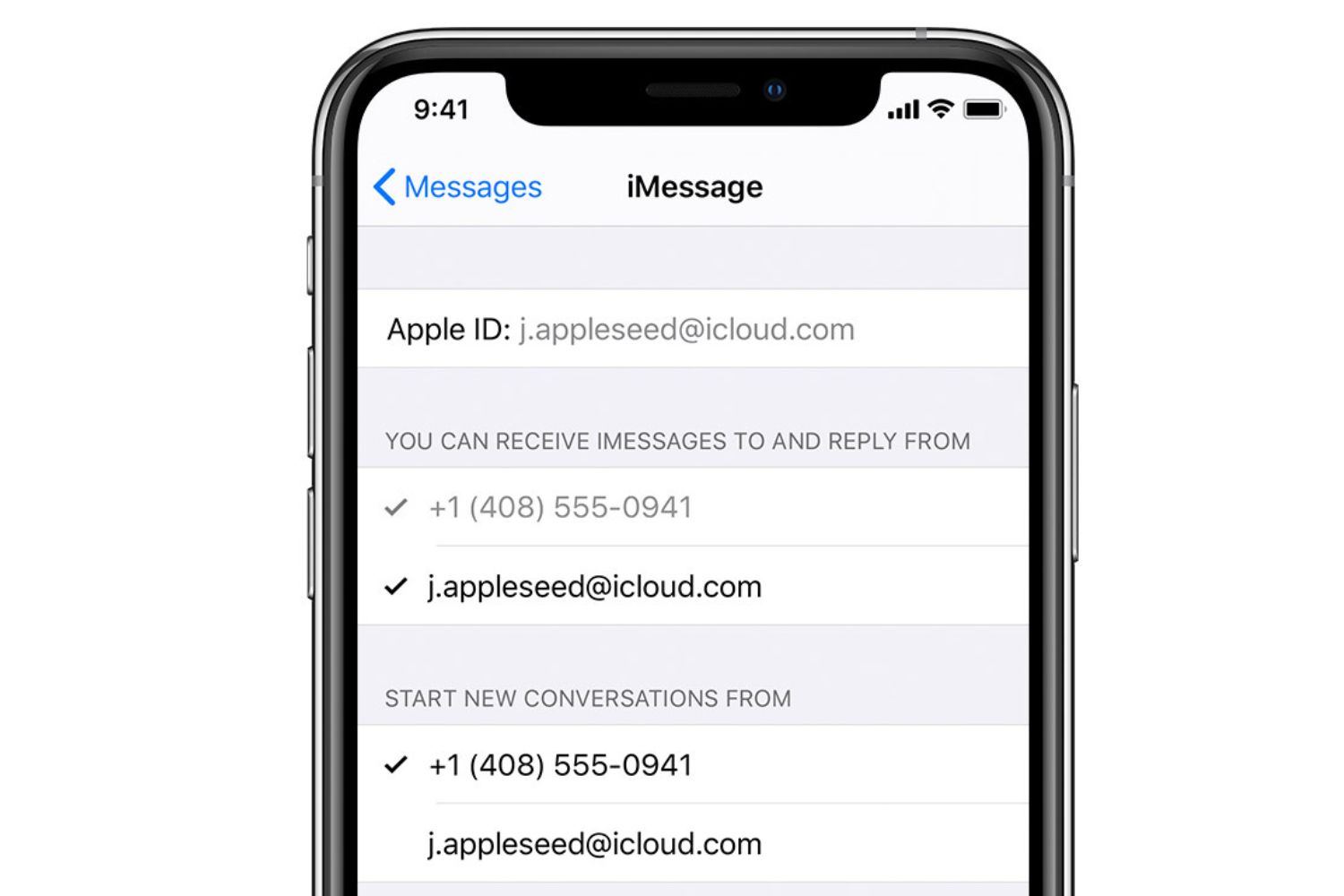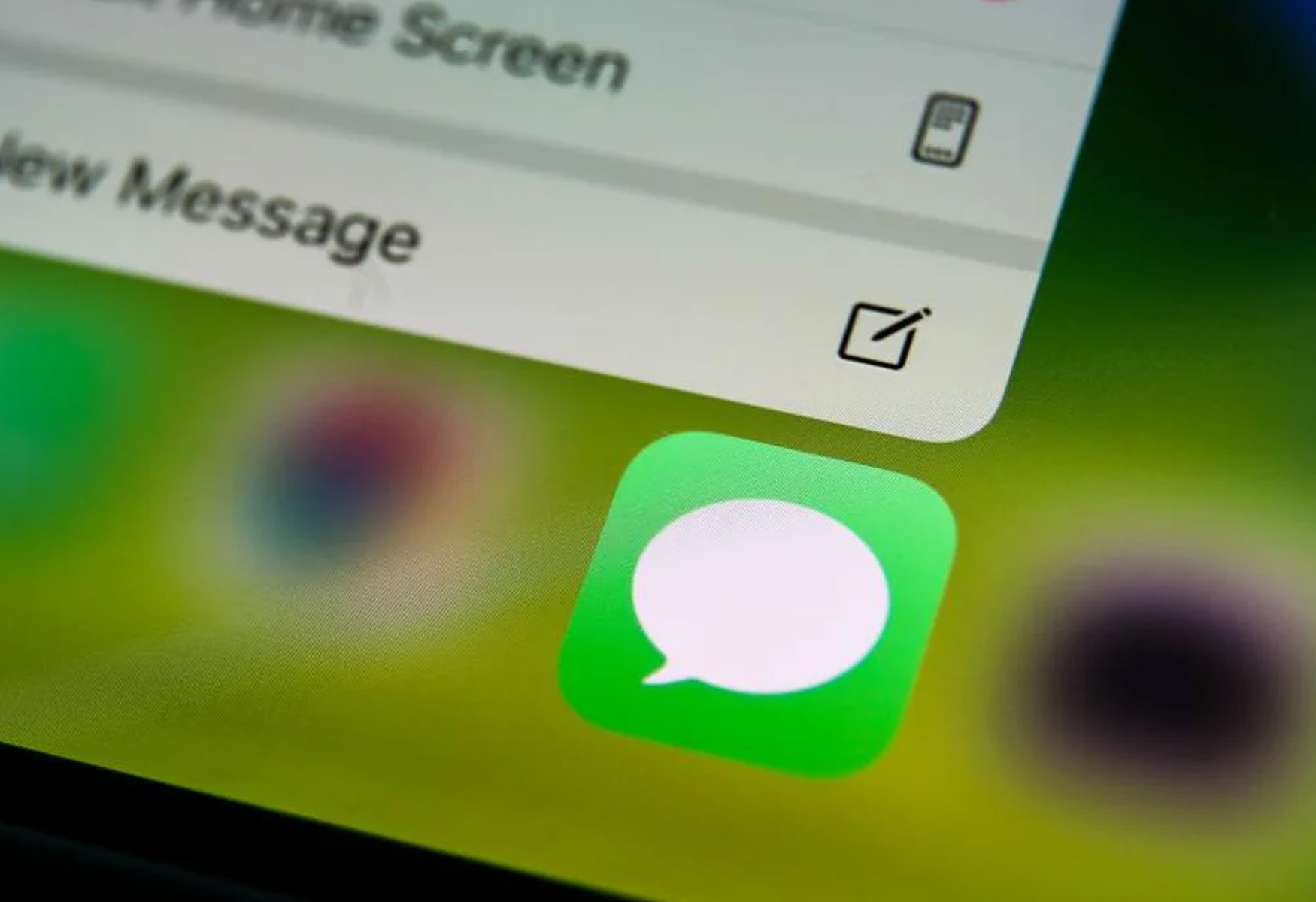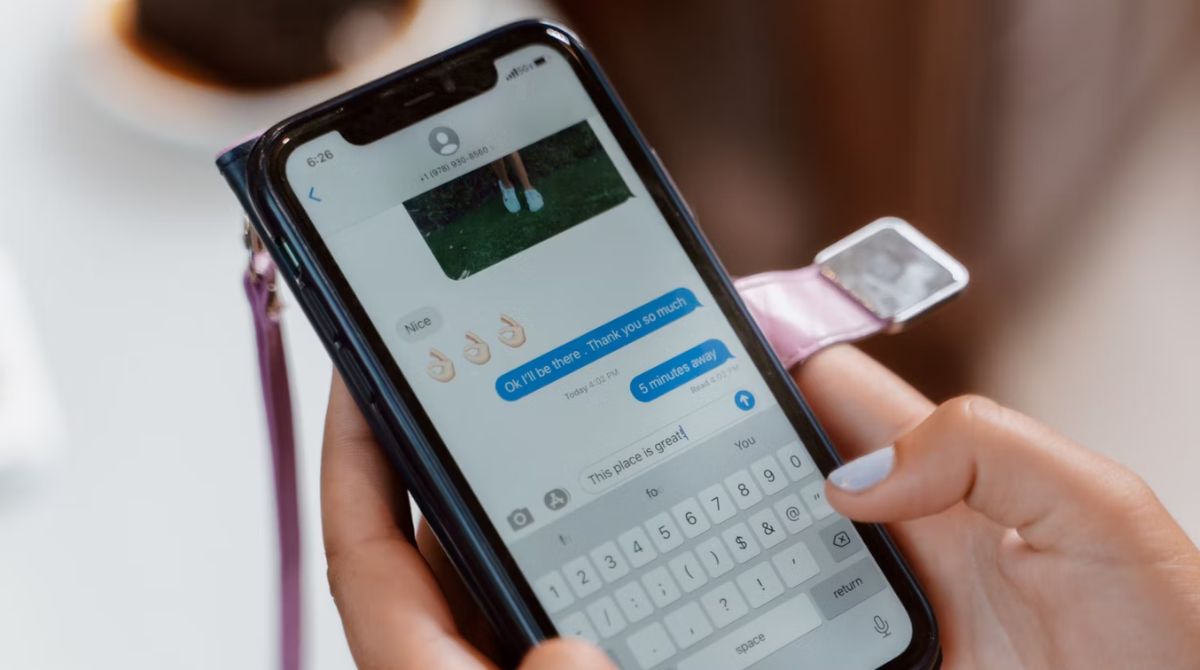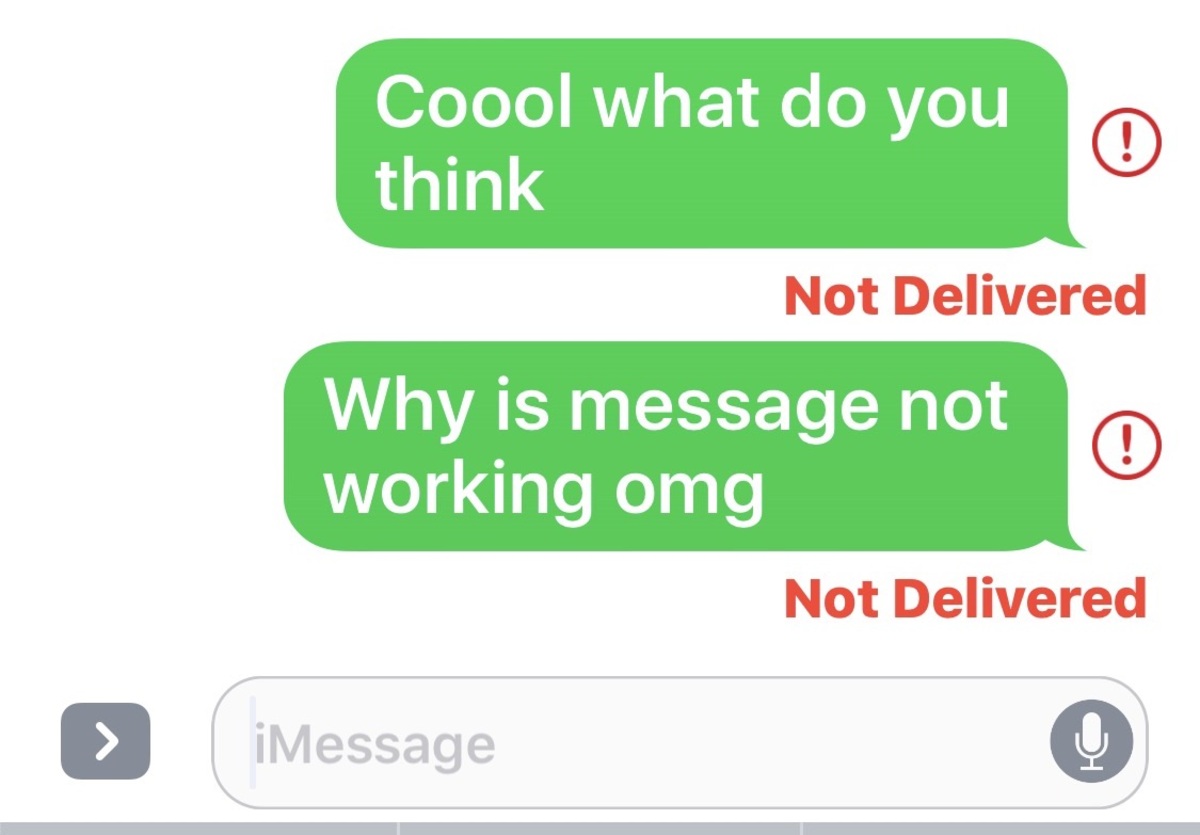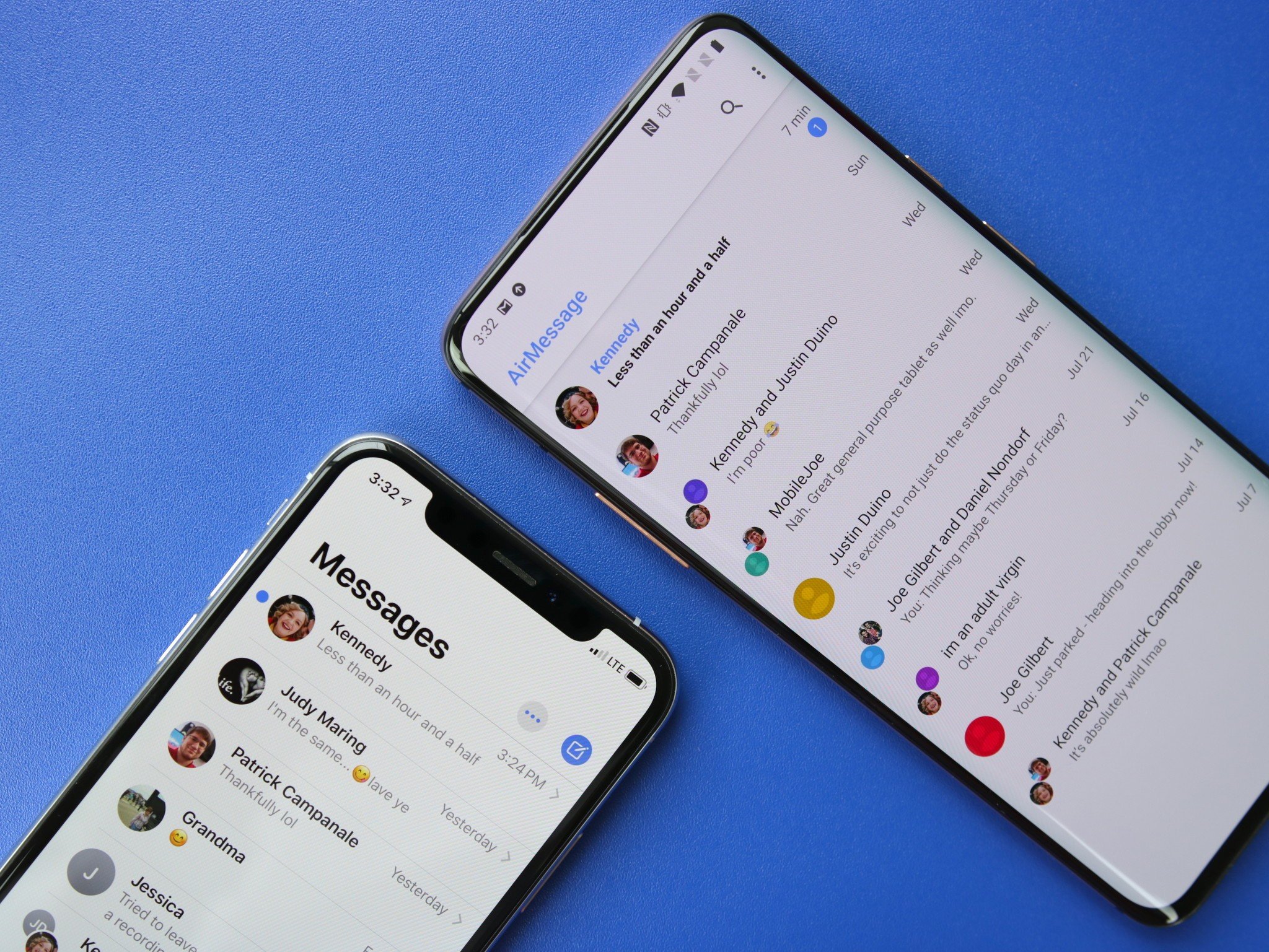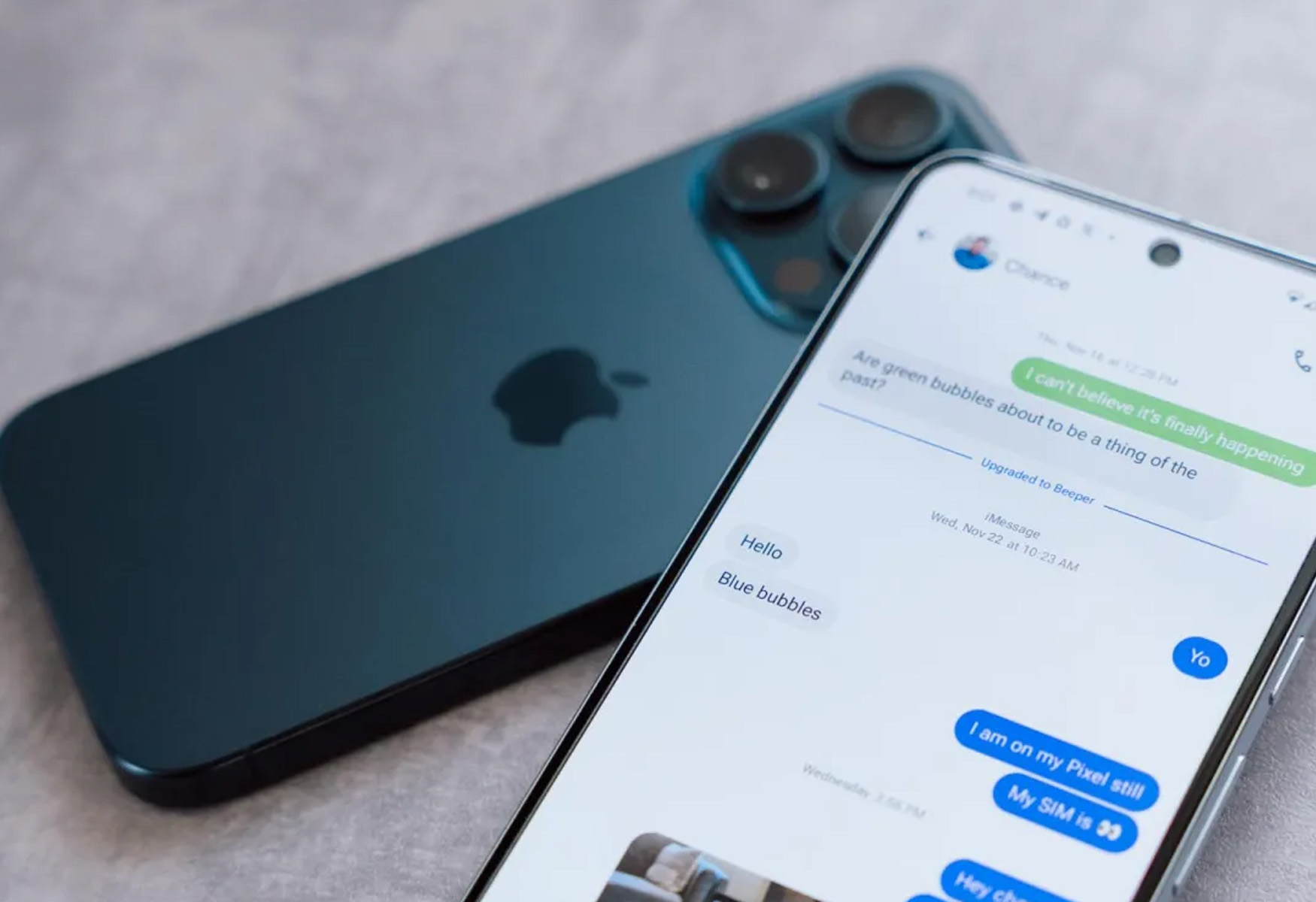Introduction
Have you ever been bothered by unsolicited and annoying messages on your iMessage app? Well, you’re not alone. Many iPhone users have encountered spam or junk messages that clutter their inbox and disrupt their communication experience. In this article, we’ll explore how to identify and report junk iMessage to effectively manage your message flow and maintain a clean and hassle-free messaging environment.
iMessage, the default messaging app on iPhones and other Apple devices, allows users to send text messages, photos, videos, and more. While it is a reliable and convenient way to stay in touch with family, friends, and colleagues, it is not immune to spam messages. Junk iMessage typically includes unsolicited promotions, scams, phishing attempts, or any message that you didn’t personally authorize or want to receive.
Identifying junk iMessage is crucial in order to prevent further inconvenience and protect yourself from potential security threats. These messages can range from annoying advertisements for dubious products to attempts to gather personal information or trick you into clicking malicious links. By learning how to recognize and report these messages, you can take control of your iMessage experience and keep your inbox free from unwanted clutter.
What is Junk iMessage?
Junk iMessage refers to unsolicited messages that are sent to your iMessage app without your consent or desire to receive them. These messages can come in various forms, including spam, scams, promotional offers, phishing attempts, and more. They are typically sent by automated systems or individuals with malicious intent.
Junk iMessage can be a significant nuisance as it clogs up your message inbox and makes it difficult to find and keep track of important conversations. It not only interrupts your communication flow but also poses potential risks to your privacy and security. Some common types of junk iMessage include:
- Spam: These messages are typically mass-sent by advertisers and contain unwanted advertisements or promotions.
- Scams: These messages often attempt to deceive you into providing personal information or money by posing as legitimate entities or offers.
- Phishing attempts: Phishing messages try to trick you into revealing sensitive information such as passwords, credit card details, or social security numbers.
- Unsolicited promotions: These messages may include unsolicited offers or discounts for products or services that you did not sign up for.
- Malicious links: Some junk iMessage may contain links that lead to malware-infected websites or phishing pages.
It is essential to differentiate between junk iMessage and regular messages from unknown or new contacts. While it is common to receive messages from unfamiliar numbers or contacts, they may not always be considered junk iMessage. Junk iMessage is characterized by its unsolicited nature and the intent to deceive or manipulate recipients.
By being aware of what qualifies as junk iMessage, you can better protect yourself from potential scams, preserve the integrity of your messaging experience, and ensure that your iMessage inbox remains clutter-free and secure.
How to Identify Junk iMessage
Identifying junk iMessage is crucial in order to effectively manage your message flow and avoid potential risks. Here are some key steps you can take to identify whether a message is junk or legitimate:
- Check the sender: One of the first signs of a junk iMessage is an unfamiliar or suspicious sender. If the message is from an unknown contact or an unrecognized number, proceed with caution.
- Look for generic or vague content: Junk iMessage often contains generic or vague content that is not personalized to you. It may include generic greetings or generic offers that are not specific to your interests or needs.
- Pay attention to grammar and spelling: Many junk iMessage are riddled with grammar mistakes, misspellings, or awkward language. This is a red flag, as legitimate messages are typically well-written and error-free.
- Beware of urgent or alarming messages: Junk iMessage often uses urgency or alarm tactics to grab your attention. If a message insists on immediate action or threatens consequences, it is likely to be suspicious.
- Don’t trust unsolicited attachments or links: Be cautious when you receive unsolicited attachments or links in an iMessage. They could lead to malware-infected websites or phishing attempts aiming to steal your personal information.
These are some general guidelines to help you identify junk iMessage, but it is important to note that scammers and spammers are constantly adapting their tactics. Therefore, remain vigilant and use your best judgment when evaluating the legitimacy of a message. Trust your instincts and err on the side of caution if something seems off or suspicious.
By being able to identify junk iMessage, you can take immediate action to prevent further inconvenience and protect yourself from potential risks.
Step 1: Open the iMessage App
To begin dealing with junk iMessage, you first need to open the iMessage app on your iPhone or other Apple device. iMessage is the default messaging app on iOS devices, allowing you to send and receive messages, photos, videos, and more.
Here’s how to open the iMessage app:
- Locate the iMessage icon on your home screen. It is typically represented by a speech bubble with a lightning bolt inside.
- Tap on the iMessage icon to launch the app.
- You will be directed to the iMessage interface, where you can view your existing conversations and compose new messages.
Once you have successfully opened the iMessage app, you are ready to move on to the next step in dealing with junk iMessage.
Step 2: Identify Junk Messages
After opening the iMessage app, the next step is to identify which messages are considered junk. It’s important to distinguish between legitimate messages and those that are unsolicited or potentially harmful. Here are some key indicators to help you identify junk messages:
- Unknown or suspicious sender: Pay attention to messages from senders you don’t recognize or trust. If the sender’s name or number is unfamiliar, it’s important to proceed with caution.
- Generic content: Junk messages often lack personalization and contain generic or vague content that isn’t specific to you. They may use generic greetings or generic offers that could apply to anyone.
- Poor grammar and spelling: Many junk messages exhibit poor grammar, spelling errors, or awkward language. Legitimate messages are typically well-written and free of errors, so be wary of messages that seem poorly constructed.
- Urgency or alarm: Junk messages often employ urgency or alarm tactics to grab your attention. They may insist on immediate action or make threats about consequences if you don’t comply. Be cautious of messages that try to pressure you into taking immediate action.
- Unsolicited attachments or links: If you receive messages with unsolicited attachments or links, it’s best to be skeptical. These attachments or links could lead to malware-infected websites or phishing attempts aiming to steal your personal information.
By carefully examining the content, sender, language, and intent of a message, you can better determine whether it qualifies as junk. It’s essential to exercise caution and trust your instincts when evaluating the legitimacy of a message, especially if it shows indications of being junk.
Once you have identified a message as junk, you can move on to the next step of blocking the sender to prevent further unwanted messages.
Step 3: Block the Sender
Once you have identified a junk sender in the iMessage app, the next step is to block the sender. Blocking the sender will prevent any further messages from that specific contact or number from reaching your iMessage inbox. Here’s how you can block a sender:
- Open the iMessage app on your iPhone or other Apple device.
- Locate the conversation or message from the sender you want to block.
- Swipe left on the message or conversation to reveal the options menu.
- Tap on the “More” or “Info” button (represented by an “i” inside a circle) to access additional options for that contact.
- Scroll down and look for the “Block this Caller” or “Block this Contact” option.
- Tap on the option to block the sender.
- Confirm the action when prompted.
By blocking the sender, you prevent any future messages from that contact from appearing in your iMessage app. This helps to keep your inbox free from unwanted messages and reduces the chances of being bothered by junk iMessage.
It’s important to note that blocking a sender is specific to the iMessage app and only prevents their messages from appearing in iMessage. They may still be able to contact you through other channels or apps, so be mindful of the platforms they can use to reach you.
Blocking the sender is an effective way to limit unwanted messages, but if you want to take further action against junk iMessage, you can proceed to the next step of reporting the message to Apple.
Step 4: Report Junk iMessage
If you come across junk iMessage that goes beyond simply being an annoyance and appears to be a scam, spam, or phishing attempt, it’s important to report it. Reporting junk iMessage helps Apple identify and take action against malicious senders. Here’s how you can report junk iMessage:
- Open the iMessage app on your iPhone or other Apple device.
- Locate the conversation or message from the sender you want to report.
- Tap on the message or conversation to open it.
- Tap on the contact’s name or number at the top of the screen to access additional options for that contact.
- Scroll down and tap on the “Report Junk” option.
- Follow any prompts or instructions provided by the iMessage app to complete the reporting process.
By reporting junk iMessage, you contribute to the efforts of keeping the iMessage platform safe for all users. Apple will review the reported message and take appropriate actions against the sender if necessary. Keep in mind that reporting junk iMessage is particularly important when it involves scams or phishing attempts that may put your personal information and security at risk.
It’s important to note that individual reports may not always result in immediate action, as Apple evaluates the overall patterns and trends of reported junk iMessage. However, by reporting these messages, you play an active role in the collective effort to combat junk iMessage and protect other users from falling victim to scams or spam.
While reporting junk iMessage is a significant step, it’s also worth considering alternative options to deal with junk messages, as no method is foolproof. Let’s explore some additional options in the next section.
Alternative Options to Deal with Junk iMessage
Aside from blocking and reporting junk iMessage, there are a few other alternative options you can consider to further manage and reduce the impact of junk messages. While these methods may not completely eliminate junk iMessage, they can provide additional layers of protection. Here are some alternative options:
- Enable Filter Unknown Senders: In your iPhone settings, you can enable the “Filter Unknown Senders” option under the Messages tab. This feature automatically filters messages from unknown senders into a separate “Unknown Senders” section, keeping your main inbox free from potential junk messages.
- Use Third-Party Apps: There are various third-party apps available on the App Store that offer advanced spam and junk message filtering features for iMessage. These apps can help identify and block junk messages, providing an additional layer of protection beyond the native iMessage controls.
- Analyze Message Headers: For more tech-savvy users, analyzing the message headers can provide insight into the origin and legitimacy of a message. By examining the metadata of an iMessage, you can identify any suspicious or abnormal patterns that may indicate a junk sender.
- Be Wary of Sharing Phone Number: Be cautious about sharing your phone number online and only provide it to trusted sources. Avoid posting or sharing your phone number on public platforms where spammers and scammers may have easy access.
- Regularly Update and Secure your Device: Keeping your device up-to-date with the latest software updates and security patches is essential for preventing vulnerabilities that scammers may exploit. Additionally, using strong and unique passwords for your Apple ID and iCloud account can help safeguard against unauthorized access.
These alternative options supplement the basic blocking and reporting methods to give you more control over managing junk iMessage. By combining these techniques and being mindful of the information you share, you can minimize the impact of junk iMessage on your messaging experience.
Remember, while these options can help reduce the influx of junk messages, it’s important to remain vigilant and stay informed about evolving spam and scam tactics. Continuously educating yourself and staying updated on the latest security practices will ensure that you maintain a secure and hassle-free messaging environment.
Conclusion
Dealing with junk iMessage can be frustrating and time-consuming, but by following the steps outlined in this article, you can effectively manage and minimize the impact of unwanted messages. Identifying junk iMessage, blocking senders, and reporting suspicious messages are crucial steps in maintaining a clean and secure messaging experience.
Remember to remain vigilant and trust your instincts when evaluating the legitimacy of a message. Pay attention to indicators such as unknown senders, generic content, poor grammar and spelling, urgency or alarm, and unsolicited attachments or links. By being aware of these signs, you can protect yourself from scams, spam, and potential phishing attempts.
Utilizing alternative options such as enabling the “Filter Unknown Senders” feature, using third-party apps, analyzing message headers, and being cautious about sharing your phone number can provide additional layers of protection against junk iMessage.
Lastly, keeping your device updated and secured, and staying informed about the latest security practices, will help ensure a secure and hassle-free messaging environment.
By following these steps and incorporating these practices into your messaging routine, you can effectively manage and deal with junk iMessage, allowing you to focus on the conversations that matter and enjoy a clutter-free and secure messaging experience on your iPhone or other Apple devices.







